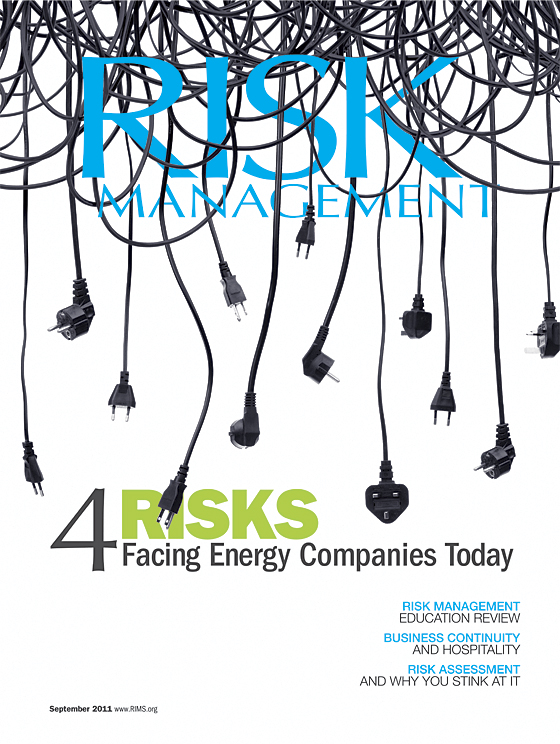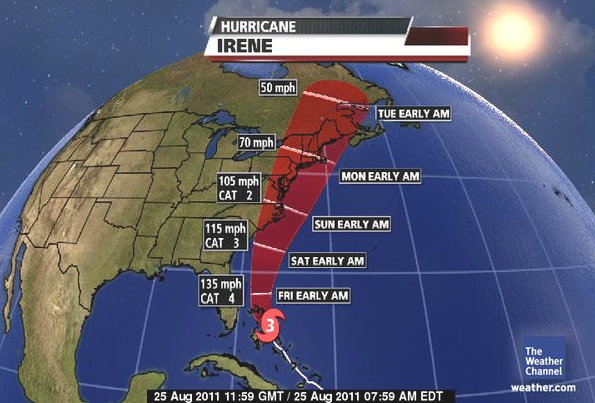In our annual September education issue of Risk Management, we highlighted 10 of the largest schools for risk management and insurance education in the United States. But those aren’t the only schools producing high quality risk management and insurance professionals. Below are a few of the schools (11 through 21) that didn’t make our list in the magazine, but are still very worthy of recognition. (The numbers in parentheses represent the total number of RMI graduates for the 2010-2011 school year.)
- Illinois State University (142)
- University of Georgia (140)
- Temple University (130)
- University of Wisconsin — Madison (97)
- Florida State University (68)
- Appalachian State University (53)
- Georgia State University (43)
- University of Central Arkansas (41)
- University of North Carolina — Charlotte (40)
- University of Mississippi (34)
- The University of Hartford (31) — UH recently became the beneficiary of a grant from FM Global and the Spencer Educational Foundation. The RMI department thrives on support from the Connecticut Valley Chapter of RIMS, small class sizes and student “career ready” development.
- St. Johns University (30) — The New York-based college offers a bachelors, masters and certificate programs in risk management and insurance. The school boasts an average undergraduate salary range of $45 to $62,000.
- Virginia Commonwealth University (28) — For the third year in a row, a student from VCU’s Risk and Insurance Studies Center has been selected for the prestigious National Association of Surplus Lines Offices internship. Three of VCU’s students also were awarded Spencer scholarships.
- Ball State University (28) — The school has the highest number of students earning the University Associate Certified Risk Manager (UACRM) designation on a yearly basis. Ball State more than doubled the total number of students earning the UACRM from 13 to 30 in the past year.
- University of Louisiana – Lafayette (21) — The local Lafayette community offers ULL’s RMI students unique educational opportunities such as in-depth exposure to traditional admitted and unique surplus line markets, CAT exposures and Napoleonic Code.
- East Carolina University (19) — Many of ECU’s recent RMI grads graduated with two parts of the Certified Insurance Counselor designation completed and students benefit from a near-100% job placement rate.
- Missouri State University (12) — For the first time, Missouri State had more than 50 risk management and insurance majors and more than 20 minors, representing one of the fastest-growing Midwest schools for RMI.
- Olivet College (12) — Olivet stays ahead of the game. This year, the college partnered with a local school district to deliver three Olivet College Insurance and Risk Management classes to high school seniors, who will then earn nine college credits and complete an insurance internship, all before their freshman year in college.
- Indiana State University (11) — ISU has enjoyed scholarship support from the school’s Gongaware Center, created by Don Gongaware, former COO at Conseco, in 1998 to assist the insurance and risk management program. The school prides itself on nearly 100% job placement rates of RMI majors.
- Baylor University (11) — The RMI program at this Waco, Texas-based school places an emphasis on the economic, statistical and financial theories underlying the insurance and risk management markets. Baylor faculty are active with organizations such as the American Risk and Insurance Association, the National Bureau of Economic Research and the Risk Theory Society.
- University of Louisiana at Monroe (8) — ULM recently began a business risk management field work program where students collect hundreds of risk and employee benefits assessments from businesses across the state of Louisiana. The school also enjoys being one of the only to require a course specifically on surplus lines and reinsurance.




